Enjoy the complete Kyoto experience!
Audio guide for Nanzenji temple, Okazaki area
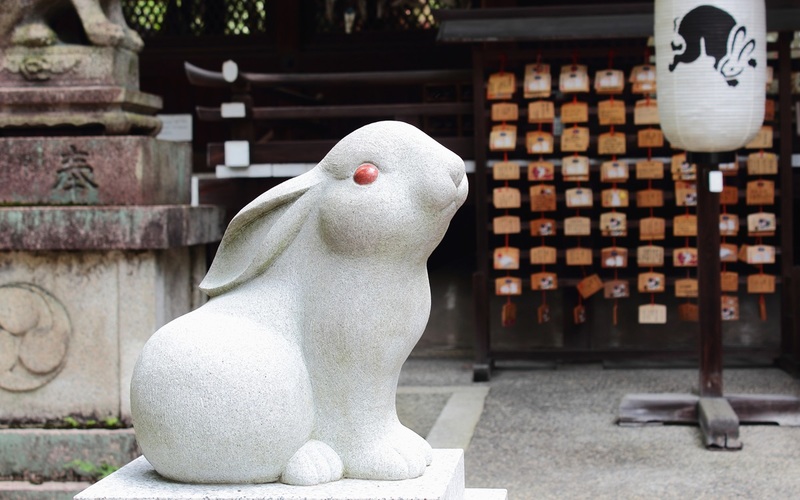
Introducing Nanzen-ji temple, Okazaki area
One of the tourist areas synonymous with Kyoto is the ”Nanzen-ji Temple and Okazaki area.” This area has not only famous temples and shrines such as Heian Jingu Shrine and Nanzen-ji Temple, but it is also popular as an area where you can enjoy the charms of Kyoto throughout all four seasons. There is the famous Keage Incline renowned for its cherry blossoms and Murin-an Temple famous for its gardens. We especially recommend coming here for the fall colors as Eikando temple, Nanzen-ji and Shin-nyo-do temple are the ideal sightseeing spots. In addition, the area is a must-go for art lovers because of the many museums to explore. It has garnered much attention in recent years thanks to the renewal of Kyoto City Zoo and the new commercial facility "Kyoto, Festival of the Ages building Toni Toni," which opened on the grounds of Heian Jingu Shrine.
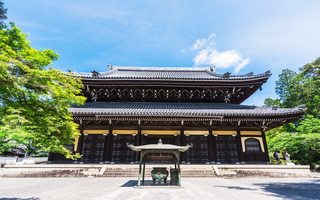
A Nanzen-ji Temple
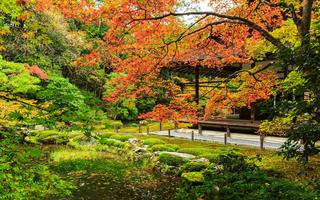
B Nanzen-in Temple
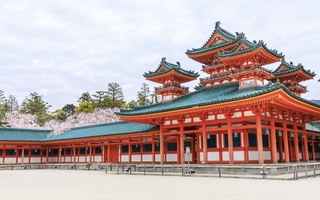
C Heian Jingu Shrine
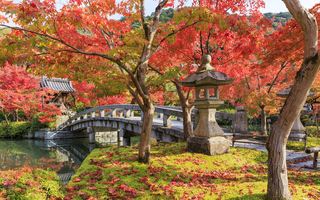
D Eikando (Zenrin-ji Temple)
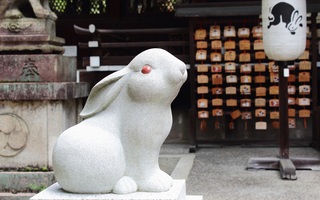
E Okazaki Shrine
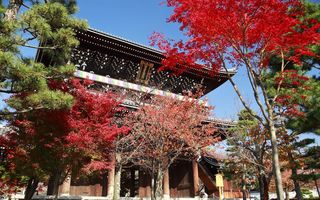
F Konkai-Komyoji Temple
26-006-07%E7%9C%9F%E5%A6%82%E5%A0%82%E5%B1%B1%E9%96%80.jpg)
G Shinnyo-do Temple (Shinsho Gokuraku-ji Temple)
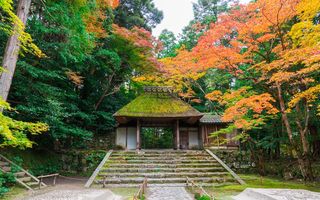
H Honen-in Temple
26-006-09%E5%90%8D%E5%8B%9D%E7%84%A1%E9%84%B0%E8%8F%B4%E6%98%A5_Murin-an%20Spring.jpg)
I Murin-an
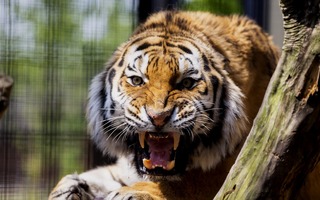
J Kyoto City Zoo
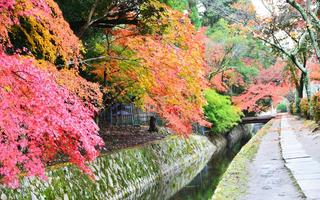
K Tetsugaku-no-michi (The Philosopher's Walk)
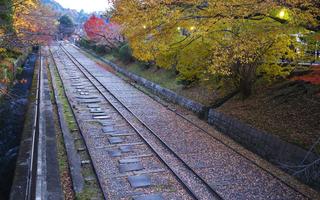
L Keage Incline
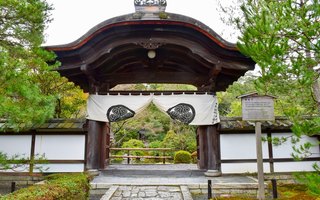
M Konchi-in Temple
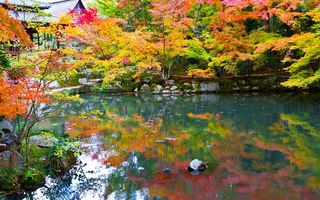
N Tenjyu-an
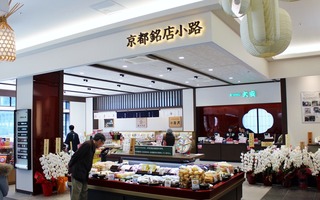
O Kyoto, Festival of the Ages building Toni Toni
A
Nanzen-ji Temple

Nanzen-ji Temple is the main Buddhist temple of the Rinzai sect. This temple is one of the most revered Zen temples in Kyoto and is treated with great care, even when compared to other high-profile Zen temples, like the top Kyoto's Five Mountains (the Kyoto Gozan). The temple is considered to have the highest standards not only in Kyoto, but also among Zen temples across the country, and it is a popular spot visited by many. One of the iconic features of Nanzen-ji is the “Sanmon” gate, which is dubbed one of the three major gates in Japan. Mentioned in the famous Kabuki performance of “Sanmon Gosan no Kiri," Goemon Ishikawa's lines: “What superb scenery, and what a great view” are very well known. You can climb this huge gate of a towering 22 meters, so please go and enjoy the view from up high. Another feature of Nanzen-ji is the "Suilokaku" bridge located on the right-hand side of the Sanmon. The Suilokaku bridge is often used as a shooting location for suspense TV shows and movies. With its red brick, European design, it's hard to believe that this impressive arch bridge is located within the Japanese temple’s premises. In addition, there are many artifacts in the temple such as the magnificent fusuma painting by Kanoha which is listed as a national treasures. There is also a Japanese garden designed by the famous Masakazu Kobori. There are also many famous sub-temples in the area to visit if you have time to spare.
B
Nanzen-in Temple

Located in the Nanzen-ji prefecture at the end of the stone stairway that passes through the Waterway Pavilion, the "Nanzen-in Temple” was originally a pillar of Emperor Kameyama and regarded as the birthplace of Nanzen-ji. Though it is a quiet little temple not overcrowded with tourists, there is a must-see wonderful garden that is one of the "Kyoto Three Scenic Historic Site Gardens" and in line with the Tenryu-ji temple and Kokedera (Saikoji Temple). It is said that the garden was a sight to behold at the time of the opening of the temple, which is also the work of Muso Soseki, who constructed many famous gardens, and Emperor Kameyama. The garden is stunning all year round and is also a particularly famous place for its moss. At the time of constructing the garden, Tatsuta's Kaede, Nanba's reed and Yoshino's cherry blossoms were transplanted, and, furthermore, famous items that had been portrayed and sung in songs since the Manyo era, ” surround this beautifully landscaped garden.
C
Heian Jingu Shrine

Although "Heian Jingu Shrine" sees many tourists daily, it is not well known that this shrine only has been around for 120 years. With the shift of the capital during the Meiji Restoration from Kyoto to Edo, modern day Tokyo, it was believed that Kyoto would go into decline. In order to revitalize Kyoto, the citizens had the Heian Jingu Shrine built in 1880 to commemorate the year of the Heian capital in its 1100th year. It was also in that year on October 22nd that the “Festival of the Ages,” one of the three major festivals of Kyoto, started being held. The diety of Heian Jingu (Saijin) is the 50th Emperor Kanmu who governed Kyoto. While at the festival, you will feel as if you’ve slipped back into the Heian era. That is, of course, because the shrine recreates the vibe of old Kyoto. Let's visit not only the shrine but also the vast garden surrounding it called the “Jin-en." The Jin-en was built by Jihei Ogawa, a 7th generation designer and one of the foremost gurus of modern Japanese gardens. The garden is divided by its different features into four areas in accordance with the cardinal directions, and you can enjoy beautiful flowers every season.
D
Eikando (Zenrin-ji Temple)

Eikando Temple, whose official name is Zenrin-ji, is the head temple of Zenrin-ji of the Nishiyama Jodo sect. About 3000 momiji maple trees are planted on the grounds and the landscape in late autumn is a masterpiece. The beloved "Momiji trees of Eikando” are synonymous with idyllic Kyoto fall colors. During the fall, the compound is illuminated for evening prayers and you can enjoy the magnificent scenery even at night. The history of Eikando Temple begins during the Heian period when Shinshou, a disciple of Kukai, opened the Shingon sect's dojo. Approximately two hundred years later, this place changed its name to Nembutsu Dojo when the seventh Eikan entered the monastery. As the story goes, Eikan originally served as a part of Nara Todaiji Temple and brought with him the treasures of Todaiji Temple in the “mikaeri amida,” or the principal object of worship at a temple. One day, Eikan was praying at the amida statue, when, suddenly, the statue started to walk in front of him as if it were leading the way. It is said that the statue then looked back over its left shoulder and said to Eikan, "Eikan, you’re too slow,” which caught Eikan by surprise. Today, Amida is still a benevolent presence that watches over all those who are going at their own pace.
E
Okazaki Shrine

Okazaki Shrine is regarded as one of the shrines that Emperor Kanmu built around the capital Kyoto in each cardinal direction to protect it during the Heian period. The shrine located east of the capital was called the Higashitenn-ou, meaning the Heavenly King of the East. The god Reiken, who had many children, is enshrined here as the guardian of children. Also, at the time of its construction, this area was the habitat of many wild rabbits, and as rabbits often give birth, they are considered to be the god's ambassadors. It is still a popular shrine for women to visit for its rabbit themed decor and trinkets. There are many rabbits statues to take selfies with such as the Koma Rabbit and Bestowed Child Rabbit, and you can even get a rabbit fortune slip, or rabbit mikuji.
F
Konkai-Komyoji Temple

Konkai-Komyoji Temple, referred to fondly by locals as "Kurodani san,” is regarded as the thatched hut Honen Shonin, founder of the Jodo sect of Buddhism, first built when he arrived. There are 18 sub-temples on the vast temple grounds that span over 40,000 square meters. The area is also famous for being the location of the main shrine of the Kyoto guardian and Aizu clan at the end of the Tokugawa period. The reason why Konkai-Komyoji Temple was chosen at this location is because it lies on a small hill as if it were a natural fort. Like a castle in itself, there is only a small gate on the southside for entry to protect against invasion. Konkai-Komyoji Temple is also known as the birthplace of the Shinsengumi, the special police force during the Bakumatsu period, and you can always find history buffs here. Special public viewings are held in the fall every year to enjoy the changing of the colors in the private garden" Shiun no niwa.” Also, in recent years “Goko Shiyui Amida statue,” or the Afro Buddha statue, has been trending on social media. Come pray to this graceful Buddha who accidentally grew his hair out because he was too busy immersed in training and praying for salvation.
G
Shinnyo-do Temple (Shinsho Gokuraku-ji Temple)
26-006-07%E7%9C%9F%E5%A6%82%E5%A0%82%E5%B1%B1%E9%96%80.jpg)
In the Nanzen-ji temple and Okazaki areas, Shinnyo-do Temple has risen in popularity in recent years as a sightseeing spot for fall colors. As Shinnyo-do is written under the official name of Shinsho Gokuraku-ji, meaning ""Here is a temple that is truly paradise,"" it seems that Shinnyo-do was originally the temple’s nickname. To enter such a paradise, you step through the red gates called Akamon gate. It is an impressive triple tower that greets you on your right as you step into the grounds. In the past, this location was used for TV commercials and posters, and the triple tower seen in the background is highly photogenic.
There are two wonderful gardens in Shinnyo-do Temple. One is “Nehan-no-niwa” with its arrangement of stones depicting Buddha's death with Higashiyama mountain in the backdrop. Another is “Zuien-no-niwa” designed by Chisao Shigemori, who is the grandson of the Showa era’s master landscape architect Mirei Shigemori. This unique garden takes its name from the Buddhist adage of “Zuien-shin-nyo”, which means ""a truth that is absolute takes many forms."" It was recently completed in 2010. The modern space is decorated throughout with the “Yotsumeyui,” the crest of the Mitsui family, the founders of one of Japan's three major conglomerates, the Mitsui Group.
H
Honen-in Temple

As the name suggests, “Honen-in temple” is a temple where Honen Shonin, the founder of the Jodo sect of Buddhism, used to practice with his disciples. Although it is famous for its autumn leaves and camellia trees, the area is also considered an idyllic hideaway. Although it is possible to pray inside the precincts for free, the temple grounds are only open to visitors during the spring and autumn. While here, there are many fun little spots to pop by, the first being the roof of the San-mon (Mountain Gate). It's a popular photo spot because it resembles an onigiri, or rice ball.
And if you pass through the San-mon (Mountain Gate) , you will see white sand mounds called “Byakusadan.” The features of the temple vary according to the season, and this harkens to the atmosphere of the garden of the temple in Kyoto. Don’t forget to keep an eye on your feet as the garden is covered with a wonderful moss. Honen-in temple is situated just a bit away from the Tetsugaku-no-michi (The Philosopher's Walk) pedestrian walkway and it is the perfect temple to escape from the bustle of the city.
I
Murin-an
26-006-09%E5%90%8D%E5%8B%9D%E7%84%A1%E9%84%B0%E8%8F%B4%E6%98%A5_Murin-an%20Spring.jpg)
The Nanzen-ji temple and Okazaki area is lined with the villas of the rich and famous. Aritomo Yamagata, a prime minister during the Meiji era who had been in politics since the end of the Tokugawa shogunate, had an estate here. The building is now open to the public, with a Japanese garden that represents the Meiji era “Murin-an” aesthetic and is a designated national scenic spot. The “Ueji” garden faces the Higashiyama mountain peak and is Yamagata’s dream garden space realized by Jihei Ogawa, the 7th generation of the later famous landscape architect family. This simplistic garden draws water from Lake Biwa. There are some parts almost invisible to the naked eye that show the trial and error of directing the water to create the perfect trickle. Aritomo Yamagata himself lent a hand in the design of this carefully crafted space. If you look at the majestic gardens from the main Sukiya-tsukuri building, you will be able to slip back into the Meiji era. There is also a garden café where you can take a step back and enjoy the sights in peace.
J
Kyoto City Zoo

When it comes to Kyoto, temples and shrines may get a lot of attention, but the city zoo is not a place that often comes to mind as a tourist spot. However, the Kyoto City Zoo is historic in that it is the second oldest zoo in Japan, following the Ueno Zoo in Tokyo. Lying adjacent to Nanzen-ji temple and Heian Shrine, the Kyoto City Zoo was given a facelift in the fall of 2015, with a renewed slogan of “up close and fun.” The distance between you and the animals is narrowed and is quite the experience. Since it is considered a small zoo for a national park, you won’t need to spend all day here and can just stop by instead. In addition to getting up close and personal with the animals, there is also a library cafe that you can enter without a ticket, so be sure to check it out.
K
Tetsugaku-no-michi (The Philosopher's Walk)

Kitaro Nishida, one of the leading philosophers in Japan, is famous for having said “Live and let live, I go my own way “ and ”People create the environment, the environment will create the people.” The "Tetsugaku-no-michi " walkway was named because he walked with indignation in thought here. Starting from the bottom, the walking path stretches 1.5 kilometers along the Lake Biwa canal from the vicinity of the Kumano nikyaku-ou-jinja Shrine north of Eikan Temple to the grounds of Ginkakuji temple. It is about a half hour walking from end to end and is the perfect path to traipse lost in thought. Approximately 500 cherry blossom trees are planted along the Tetsugaku-no-michi, and it is a popular tourist spot in the spring. Besides spring, the green foliage and fall colors are also beautiful, not to mention the wondrous sight of early summer fireflies. Along the Tetsugaku-no-michi, popular tourist stops such as Eikan temple, Honen-in Temple, and Ginkakuji are all conveniently on the same path, so please enjoy your walk along the way.
L
Keage Incline

Keage Incline is a popular cherry blossom spot in the Nanzen-ji temple and Okazaki area. This national historic site had a 60-year tenure as part of the water transport route of the Lake Biwa Canal until the 1950s. It consisted of a railway that connects two waterways of different elevation from the incline. If you walk on the incline, which only seems to be a railway track, you will feel as if you’re on the set of the classic American film "Stand by Me.” Along the tracks, there are clusters of Yoshino cherry tree, and when they’re in full bloom, it is a sight to behold. Nearby the incline is Biwako Canal Memorial Hall and with no entry fee, why not stop by?
M
Konchi-in Temple

Konchi-in Temple is one of the sub-temples of the Nanzen-ji Temple opened in Kitayama by the Muromachi Shogunate, Yoshimochi Ashikaga. It has been relocated to its present location by Ishin Suden, known as the "Prime Minister of the Black Court." Some attractions of Konchi-in are the fusuma paintings by Kanoha and Tohaku Hasegawa and the garden which is a designated national scenic spot. The Zenji Temple Gardens, named “Crane and Turtle Garden(Tsurukame no niwa)," showcase splendid dry landscapes. This is a high-class garden created to pray for the prosperity of the Tokugawa family. It was designed by Enshu Kobori and it is considered a priceless cultural artifact as his original schematics still remain. While here, why don’t you visit the special viewing area? Here, you can see Enshu Kobori’s favorite tea room called "Hasso-seki," which is an important cultural property, and the famous Ensoku-kougetsuzu, translated as “monkey reaching for the moon,” fusuma painting. While viewing reservations are usually required in advance, it’s worth checking out as there may be spots available on the day.
N
Tenjyu-an

Tenjyu-an, one of the towers at Nanzen-ji temple, was built in 1339 during the Muromachi period and later restored by the Hosokawa family as their own temple after being destroyed in the Onin Wars. The two gardens in different styles here are the highlights: the dry landscape garden “Enmokutei” and the stroll garden “Choushin-tei” with a central pond. Enmokutei is a garden that became famous through appearances on TV commercials, and the changing of the leaves here is breathtaking. We also recommend the illuminated tour during the evenings. Choushin-tei garden boasts of a scholastic beauty that may leave you speechless, especially during the seasons of fresh green and blue maple. In a special viewing of artworks conducted only a few times a year, you can see the masterpiece fusuma paintings of Tohaku Hasegawa, so don’t miss out if you’re in the area when it happens.
O
Kyoto, Festival of the Ages building Toni Toni

The temple and shrines are crowded in the Nanzen-ji temple and Okazaki areas, but surprisingly, there are not many places to rest or pick up souvenirs. In order to meet such demand, the commercial complex "Kyoto, Festival of the Ages building Toni Toni" opened on the grounds of Heian Jingu Shrine. With the slogan "The Festival of the Ages is here 365 days,” one of Kyoto 's three greatest festivals “The Festival of the Ages" can be experienced through the latest technologies, such as 3D mapping. There are also lots of stores where you can find a selection of souvenirs and local gourmet treats. Furthermore, there are also shops offering sweets too pretty to eat, making the complex a spot which attracts the attention of young women as well.